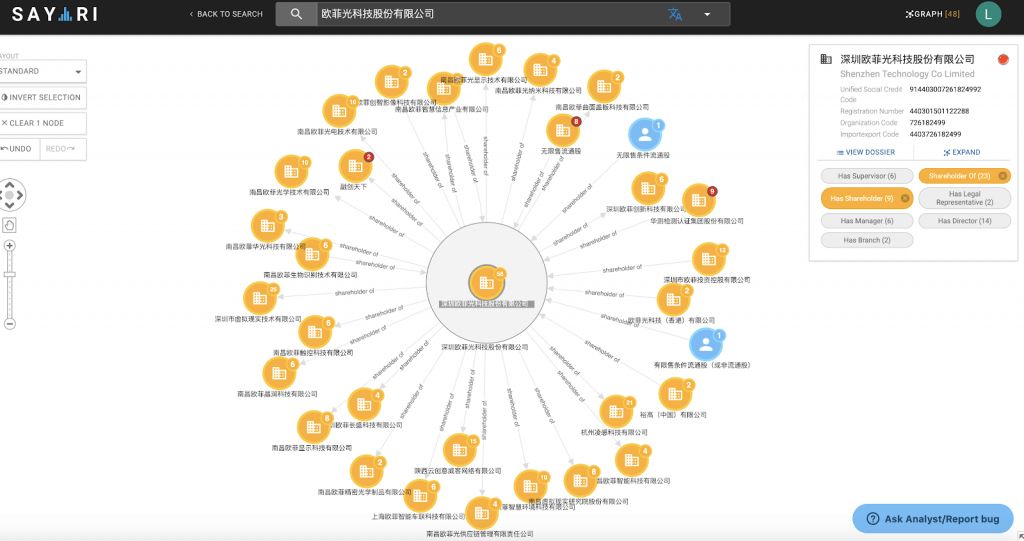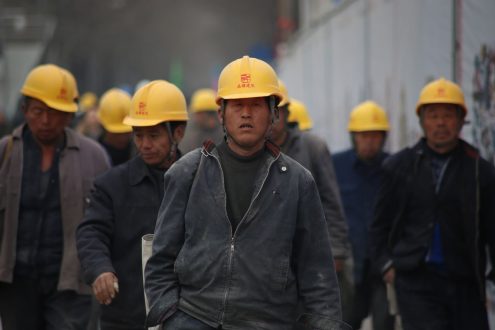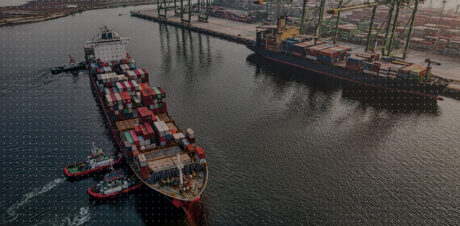Forced labor continues to threaten the supply chains of companies that rely on Chinese manufacturing. A new report from the Australian Strategic Policy Institute (ASPI) provides evidence to suggest that the Chinese government may be forcing Uighur and other ethnic minority citizens to work in factories across the country. These factories in turn supply at least 80 major brands, and likely many more.
Public records can help responsible sourcing teams better identify and mitigate the risk of forced labor entering their global supply chains. As an example, we looked at a current Apple supplier named in the ASPI report for potentially using forced labor, including dozens of high-risk subsidiaries that have not yet been publicly identified.
Evidence of Potential Forced Labor in Chinese Factories
On March 1, the Australian Strategic Policy Institute (ASPI) published a report that documented the transfer of more than 80,000 Uighurs from Xinjiang to work in factories across China from 2017 to 2019. The Uyghurs’ working conditions meet the International Labour Organization (ILO) indicators of forced labor, including restricted freedom of movement, constant surveillance, political indoctrination, and police presence in factories, according to the report.
In addition, the investigation also found that these factories are in the supply chains of at least 80 global brands in the technology, clothing, and automotive sectors. Companies sourcing from factories that use forced labor could be in violation of numerous laws and, for most major global brands, their own supplier codes of conduct.
Public investigations like the ASPI report help responsible sourcing teams identify high-risk Chinese companies that they can screen against their supplier lists. However, forced labor can enter the supply chain multiple tiers away from directly contracted suppliers. It is important to identify high-risk companies themselves, along with their owners, subsidiaries, and other related companies who may also expose supply chains to risks of forced labor.
Identifying Risk Through Multiple Tiers of Ownership
As an example, we mapped the corporate network of one of the Chinese manufacturers named in the ASPI report using the Chinese public records in Sayari Graph.
OFILM Tech Co., Ltd. (欧菲光科技股份有限公司) employed Uighur workers under possible forced labor conditions at one of its factories in Nanchang, according to ASPI. OFILM manufactures compact camera and touchscreen components. It claims a number of strategic partners in the technology sector, including Apple, for which it manufactured components of the iPhone 8 and iPhone X. Sayari confirmed that OFILM still appears on Apple’s supplier list.
OFILM Tech Co., Ltd. itself is part of a corporate group of more than 100 companies across China and Hong Kong, including 29 direct subsidiaries.

Fig 1. Snapshot of the OFILM Tech Co., Ltd. network in Sayari Graph. The numbers at the top of each entity icon indicate the number of second-tier connections.
Notably, 15 direct and indirect subsidiaries are based in Nanchang, where the OFILM factory potentially employing forced Uighur labor is located. Public records indicate that these subsidiaries operate in similar industries as their parent company, including the development of optical technology and electronic equipment. Therefore, it is possible that these subsidiaries could also potentially be employing forced labor, either at the same Nanchang factory or a similar one. Even though their names do not appear in the ASPI report, they could pose a greater risk of introducing forced labor into a global supply chain.
Public records are an invaluable tool for understanding the full reach of a corporate network like this one. OFILM is an established company with a public website that lists subsidiaries, but the list is incomplete. Most of the subsidiaries and related companies shown here do not appear on OFILM’s website or elsewhere on the internet.
Get Ahead of the Problem
As the OFILM case demonstrates, public records can help investigators respond when journalists, think tanks, government agencies, or others expose factories that could be using forced labor. But public records also enable investigators to get ahead of the problem—that is, conduct better risk assessments, more efficiently target site visits, and identify supply chain exposure before the media does.
You can download our tip sheet on “How to Identify Forced Labor in Your Supply Chain” here.



